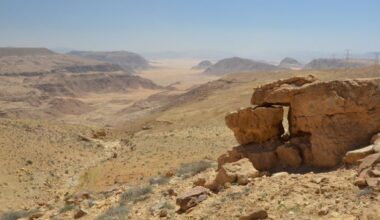Project summary
The project is part of an effort to rebuild the connections between the local community and both the remains of the Ottoman village and the archaeological remains of the ancient city of Gadara on which it was built. We aim to revitalise the community’s sense of place and interest in their heritage and, in doing so, support sustainable heritage approaches that benefit the economy and ensure protection for all aspects of Umm Qais’ past.
Project details
Location: Jordan
Year(s): 2019-2021
Principal Investigators: Dr Gehan Selim (University of Leeds) and Dr Monther Jamhawi (Jordan University of Science and Technology (JUST))
Co-investigators: Dr Shouib Nouh Ma’bdeh (JUST); Dr Shatha Abu-Khafajah (Hashemite University); Professor Mohamed Gamal Abdelmonem (Nottingham Trent University); Dr He Wang (University of Leeds). Research Fellow: Dr Andrew Holland (University of Leeds)
Project partners: Mrs Samia Khouri (DoA); Dr Carol Palmer (CBRL); Mr Ehab Amarin (The Jordan Museum); Mr Mohammad Al-Qaisi (The Jordan Museum); Mr Mousa Malkawi (Umm Qais Archaeological Site); Mr Ehab Jariri (DoA)
Lead and partner institutions and funding:
- University of Leeds (Lead Research Organisation)
- Jordan University of Science and Technology (JUST)
- Hashemite University
- Nottingham Trent University
- Department of Antiquities of Jordan
- The Jordan Museum
- Council for British Research in the Levant (CBRL)
- Arts and Humanities Research Council (AHRC)
- Newton Khalidi Fund
For further details, see the project website: Home | UmmQaisHeritage
See here for the project entry on the UKRI gateway to publicly funded research and innovation.
Project description
The Living Museum Umm Qais is a Newton-Khalidi project in Jordan, led by Dr Gehan Selim. The project is part of an effort to rebuild the connections between the local community and both the remains of the Ottoman village and the archaeological remains of the ancient city that it was built on. We aim to revitalise the community’s sense of place and interest in their heritage and, in doing so, support sustainable heritage approaches that benefit the economy and ensure protection for all aspects of Umm Qais’ past.
The project brings together an international cross-disciplinary team of experts, students and volunteers from architecture, archaeology, cultural heritage projection and management, digital arts, computer science, governance and education. We are utilising this breadth of experience and knowledge to engage with young people and early career heritage professionals, building capacity in the latest 3D digital approaches for cultural heritage within the community, universities and enterprise.
We support this collaborative partnership to co-design and co-produce digital platforms and approaches that can record, promote and present Umm Qais and its heritage. In turn, this capacity building develops a resource of cultural heritage expertise within the community that can support sustainable economic development of the economy linked to heritage protection.
Project bibliography
Selim, Gehan. 2021. The Living Museum of Umm Qais: Sustainable preservation, analysis and virtual reconstruction of Gadara’s ancient site and village. Bulletin of the Council for British Research in the Levant 2020, p 29.
Selim, Gehan, Monther Jamhawi, Mohamed G. Abdelmonem, Shouib Ma’bdeh, and Andrew Holland. 2022. The Virtual Living Museum: Integrating the Multi-Layered Histories and Cultural Practices of Gadara’s Archaeology in Umm Qais, Jordan. Sustainability 14, no. 11: 6721. https://doi.org/10.3390/su14116721.
Published:13 December 2021
















